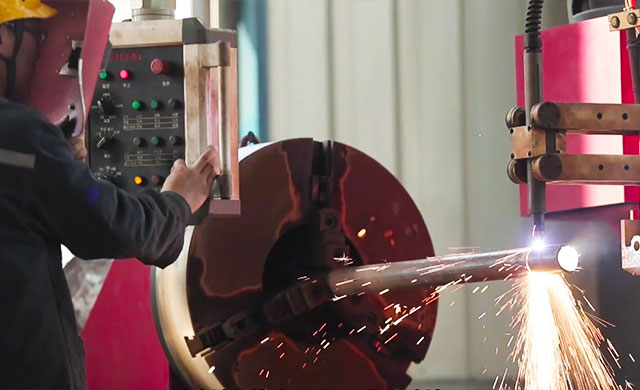
Oct . 31, 2024 01:20
Back to list
natural gas pressure reducer
Understanding Natural Gas Pressure Reducers Essential Components for Safe and Efficient Gas Distribution
Natural gas is a critical energy source worldwide, powering homes, industries, and vehicles. However, for it to be used safely and effectively, the pressure of the gas must be properly regulated. This is where natural gas pressure reducers come into play. These devices are essential components in the distribution system, ensuring that gas is delivered at a safe and usable pressure.
A natural gas pressure reducer, also known as a pressure regulator, is designed to control the pressure of the gas coming from the supply line before it reaches end-users. The pressure of natural gas can vary significantly as it travels from the wellhead through pipelines and eventually to consumers. If the pressure is too high, it can pose serious safety risks, including explosions or leaks. Conversely, if the pressure is too low, it can result in inadequate flow, leading to inefficient operation of gas appliances or heating systems.
The workings of a pressure reducer are relatively straightforward. They typically consist of a spring-loaded diaphragm and a sensing element that monitors the downstream pressure. When gas enters the regulator, it pushes against the diaphragm. If the downstream pressure exceeds the predetermined safe level, the diaphragm moves to reduce the flow of gas, thereby lowering the pressure. This automatic adjustment ensures a consistent and safe pressure is maintained within the system.
natural gas pressure reducer

Natural gas pressure reducers come in various types and sizes to accommodate different applications. They can be found in residential settings, commercial buildings, and industrial facilities. Each application may require a specific type of regulator based on factors such as the maximum flow rate, required pressure setting, and environmental conditions.
Regular maintenance of pressure reducers is essential to ensure their proper functioning. Over time, dirt and debris can accumulate inside the regulator, potentially affecting its performance. Additionally, wear and tear can occur on the components, particularly in high-demand environments. Routine inspections and timely replacements can mitigate these risks, enhancing safety and efficiency.
In recent years, advancements in technology have led to the development of smart pressure regulators equipped with sensors and monitoring systems. These devices provide real-time data about pressure levels and can alert operators to any anomalies, further improving safety and operational efficiency.
In conclusion, natural gas pressure reducers are vital for the safe and efficient distribution of natural gas. By maintaining appropriate pressure levels, they help prevent hazardous situations while ensuring that consumers receive a reliable supply of energy. As technology continues to evolve, these devices will play an increasingly critical role in the energy landscape, contributing to a safer and more sustainable future.
Next:
Latest news
-
Safety Valve Spring-Loaded Design Overpressure ProtectionNewsJul.25,2025
-
Precision Voltage Regulator AC5 Accuracy Grade PerformanceNewsJul.25,2025
-
Natural Gas Pressure Regulating Skid Industrial Pipeline ApplicationsNewsJul.25,2025
-
Natural Gas Filter Stainless Steel Mesh Element DesignNewsJul.25,2025
-
Gas Pressure Regulator Valve Direct-Acting Spring-Loaded DesignNewsJul.25,2025
-
Decompression Equipment Multi-Stage Heat Exchange System DesignNewsJul.25,2025

